A Professor on Water Management
Omo and Nile River Basins
|
NEW ESRI StoryMaps: What's On Our Shelves & NWNL Song Library & No Water No Life ESRI |
Omo and Nile River Basins
Negash Wagesho Amensho
Director of Irrigation Department at Water Technology Institute
Alison M. Jones
NWNL Director and Photographer
All images © Alison M. Jones. All rights reserved.
Since 2004, Negash Wagesho has been a senior lecturer at the Water Technology Institute [WTI] in its Irrigation Engineering Department. Since 2006, he has been Department Head of Irrigation, one of the Institute’s four departments. The others are the Engineering, the Irrigation Engineering and Sanitary Engineering Departments. The latter was closed because sanitary engineering was a bit over-saturated in the community. Thus, it became part of environmental engineering. Meanwhile, the Irrigation Department has become increasingly important to the future productivity of Ethopia’s farmers, at all levels.
The first half of this discussion relates to the Omo River Basin. The second half relates to the Nile River Basin.
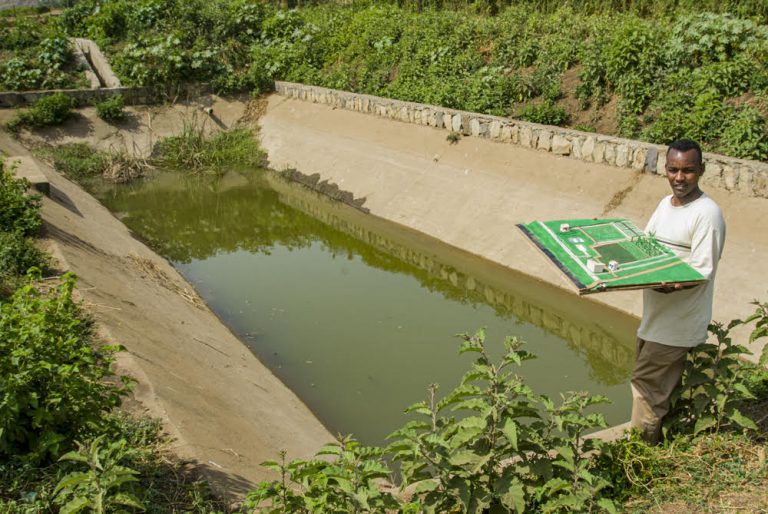
NWNL Hello, Negash. Let’s begin with your description of the Irrigation Department of the Water Technology Institute, casually called WTI.
NEGASH WAGESHO The mission and vision of our department is to train students to be well equipped in developing water-resource projects at small, medium or large scales that would create a water-supply system for rural or municipal supplies. For the last 19 years, this department has graduated many engineers into this sector. Most of our graduates have immediate involvement after their graduation, with remarkable and outstanding achievement early on. That’s a very nice thing. We communicate with local governments to strengthen the practical part of our students’ studies and we try to establish financial support for their projects.
NWNL Thank you for showing me this student project. What we are looking at?
NEGASH WAGESHO Here, we are demonstrating a small drip-irrigation system, using local materials from within the laboratory on the demo farm. It’s not exhaustive, and it’s not yet impressive as it’s not yet developed. Last year, we got a small amount from the World Bank’s development funds. We created this model to help establish a new system to rehabilitate or improve existing systems to fit with current demands.
Our policy is to establish and improve this demonstration farm so students can learn about irrigation activities, water management strategies, water application, how to measure water losses, and how to maximize the yield and deficiency.
This demonstration farm is not active so far, so we have been sending our students to another area for their three months of field practice. They look at aspects which fit their class lessons, and they learn early on of some of the challenges. When they come back to our campus after two or three months in the field, they present what they learned. Then, after two weeks of final examination, some go for two more months of field practice.
A well-trained professional in the water sector is really in great demand; and to that end, with requests from our stakeholders nowadays going up, we can’t meet the demand of our stakeholders or employers. We’re planning to increase our intake capacity soon. So far, the intake capacity for our department is 80 to 100 new students per year. But we plan to increase this number in the future in order to meet the requests of our stakeholders.
I hope this will improve the whole education system so that most of the department’s lessons will be practically oriented, and that we can structure the engineering capacity-building program so students will stay for about five years. With five years, the last two years will be committed to practical classes so students could join either the construction industry, a factory or water-source development projects.
The problem we face now is a great shortage of instructors. One instructor is responsible for three courses. That’s a very big load.
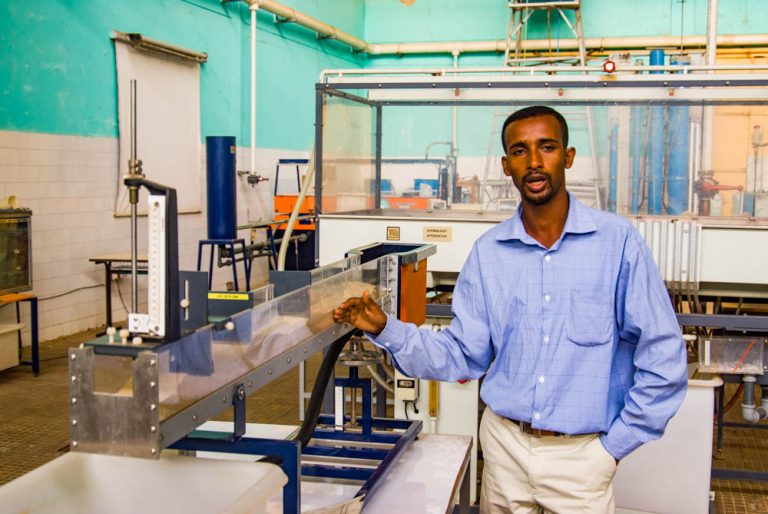
NWNL How many classes do you teach?
NEGASH WAGESHO I work as the Department Head, which has many responsibilities, and I also conduct three classes. Usually, I’m still at my office after midnight. I don’t have ample time to run my personal life. This is embarrassing, but it is my commitment. There is a real shortage of instructors, which is not good for our students.
Some friends here do not even have an office. They simply sit under a big tree near a lounge. Students sit on chairs as my associates try to conduct classes. It’s not a good thing. As well, the salaries and incentives offered to instructors are very small nowadays. The demand for instructors for various social efforts is really increasing, but we literally can’t keep up with the current market.
The other thing related to problems in our teaching/learning process is the low attention of the government to improving the whole education sector. That’s my personal opinion. The government fully engages itself to quantity rather than quality. They’re running ways to maximize the number of graduates, and that’s a good thing of course, since quality should be emphasized over the number of students graduating.
We have a lot of staff, about fifty staff members in the Water Initiative Institute, but what is their research capacity? There are only three or four projects now run by my staff members or my faculty members. What is left for low-level researchers? The incentives offered are low. Financial support obtained from different sectors, as well as from universities, is low.
NWNL That is all very unfortunate, especially in a country with such huge needs for water-related engineering. How would you describe those issues?
NEGASH WAGESHO The volume of water problems is related to water resource projects, their consequences – and financial constraints, of course. The government’s limited financial support is not sufficient enough to execute, run, maintain or repair such projects. That’s one serious problem. Number two, well-trained professionals in water sector are very limited.
The intentions and current policies of the present government are good. Still, with so few professionals, we are limited in being able to take care of research sites related to water resource projects, water resource transportation and the examination of surface water sources.
Current projects in irrigation, water supply sanitation, hydropower, and such are not functioning to the design standards. Why? The first reason is the design was usually not made based on detailed study. They missed some or the study, and that brings about malfunction in some of the systems.
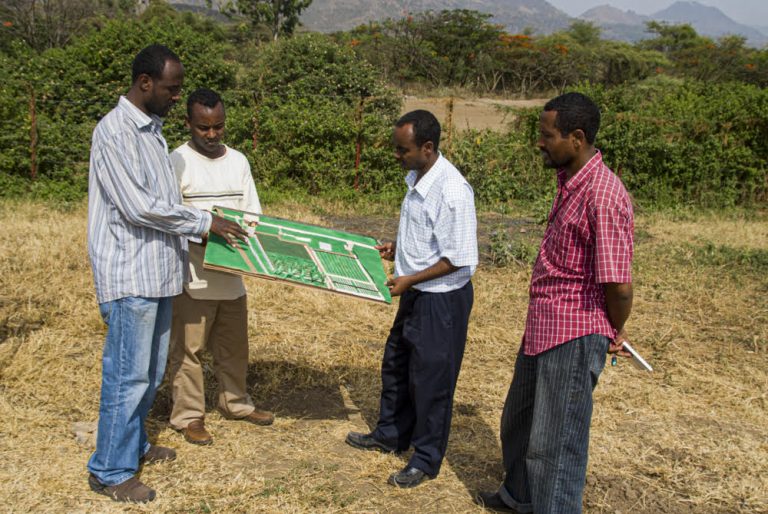
Many special irrigation projects related to irrigation water mismanagement face water-logging problems. One ten-year irrigation project faces abundant water logging because our farmers want to supply much more water to their field. They think that more water will produce much more yield – but the reverse is true. The excess of these water applications to the fields creates serious problems.
It’s not only on this project. With most irrigation projects, water management is very poor. The farmers should follow our state farms’ use of our irrigation meter. It seems the farmers don’t even want to implement sprinklers or drip irrigation which can minimize water loss. We have one course studying why farmers do not want to look for such water-saving mechanisms and other serious problems related to water resource projects.
NWNL You are facing very interesting challenges. Do you know anything about the possible new commercial venture for cotton farming in Omorate ? I was just there and saw trees being cut down to prepare new fields. I hear North Koreans were there before – maybe fifteen years ago – but then abandoned the project. Will today’s farmers need to completely rebuild the former irrigation infrastructure?
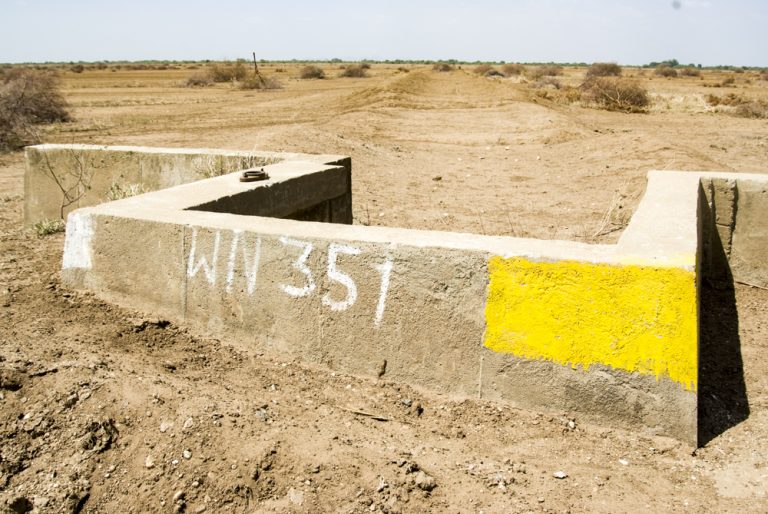
NEGASH WAGESHO There is large overland project in the Omo River Basin at the lower foot of the Omo River. As you mention, Koreans tried to establish a big irrigation project there during Menigistu’s Derg Regime [1974-91] in Ethiopia. After the fall of the Derg Regime, the government removed that project, and didn’t pay any or much attention to that region. This renewed attempt is now Ethiopia’s largest irrigation project.
The current government policy addresses development of small irrigation projects, especially community-based, smaller-scale irrigation projects. The primary interest is in self-sufficiency. Therefore, the government began to erect a small-scale irrigation project for farmers to maximize their production. That was the intention – but now the direction of the government is toward large-scale irrigation projects.
My information on that sector you saw is that the government wants to sell this large area of land in Omorate to private investors willing to take it on. It would cost the government much more money than it has available to start cotton production. You see, it’s mostly the financial constraint that holds Ethiopia back, as far as Omorate is concerned. The other concern is the area is situated within the lower arm of the Omo Basin, where it is very hot and there are traces of malaria. Thus, I suppose that even if you gave that area to indigenous farmers, they wouldn’t try to develop agricultural efforts, since the weather conditions are so bad. Yet, some infrastructure is needed to serve Omorate’s public sector. Indigenous farmers settled there do grow crops.
NWNL NWNL has documented how the Omo Valley tribes have practiced traditional flood-recession agriculture for 6,000 years. They plant maize, sorghum and barley on riverbanks left wet as the Omo River flood levels (created by annual monsoonal rains) slowly drop down from levels of up to 60 feet (18 m). But the new upstream cascade of 5 Gibe Dams will put an end to these annual fluctuations that had precluded any need for irrigation. So yes, these tribal communities will now need infrastructure support for crop irrigation in their arid land, if they are to survive.
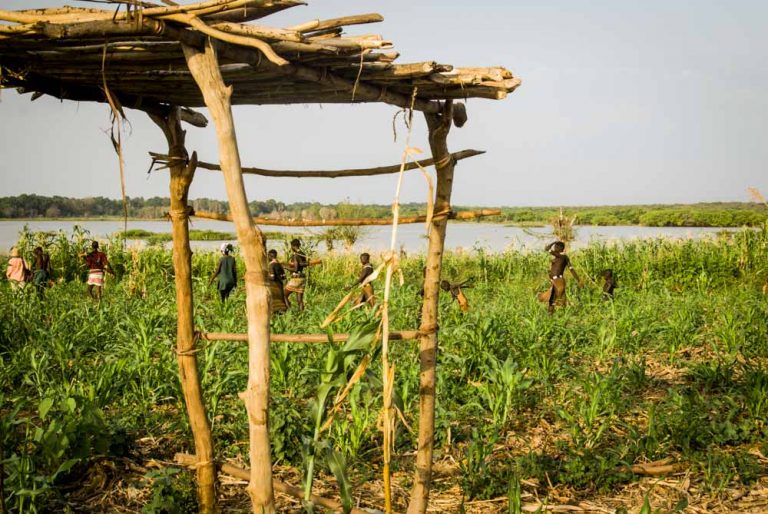
NEGASH WAGESHO Yes, we could try to develop that huge area. Yet the region presents a sub-condition environment for any investors, including local investors. There are other better options for which they can come here and invest their money.
NWNL So, has anyone yet committed to the Omorate cotton-farming project?
NEGASH WAGESHO Some investors have been applying to execute the project, but it’s not yet sanctioned to anyone. If these national and international private investors do invest in that particular area, then we can prepare the area. Currently, there’s no access by road, or by other means. When roads are needed, the government does this one; the investor does that one, etc, etc. With all these possibilities, Ethiopia will probably be able to satisfy their demands. Yet as far as I know, the Omorate project hasn’t been sanctioned to any one of them.
NWNL When I drove by a week and a half ago, the fields in Omorate were all recently cut, including trees that had grown up from the time when the North Koreans were last there. There’s a lot of work going on there.
NEGASH WAGESHO I don’t know exactly what’s going on in the last month or so.
NWNL Maybe the government is trying to prepare it to be appealing to investors – or maybe there’s an investor who is moving in?
I’ve heard that decades ago, the North Koreans worked with the Derg Government to set up their Omorate project as a place of punishment, bringing people there to work in extreme heat. While the North Koreans were striving for economic success, Ethiopia treated the project as more an internment camp than any economic venture. Is that right?
NEGASH WAGESHO Yes. I was probably ten or twelve years at that time of the Derg Regime, when the Koreans’ project began. Thus, I only have the latest history or information on that. There are some other state-owned farms; but, yes, the Koreans built that one big project in the Omo Basin.
That area is normally committed to production of tobacco, since the cigar is popular. Tobacco plantations – still active- were normally built by the Koreans, during the Derg region. The Socialist Republic of Korea has a strong link with Ethiopian government.
NWNL I certainly understand the challenges of living in that region. Having left there last October with malaria, I am aware of local diseases there and I know the heat!
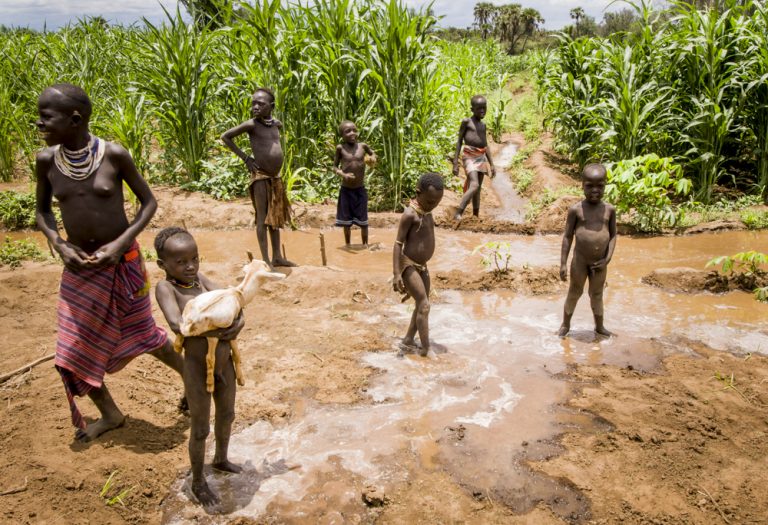
NWNL Let’s discuss Ethiopia’s irrigation issues in its Blue Nile River Basin. Britain brokered a treaty with Egypt and Sudan saying only those two countries had access and rights to waters of the Blue Nile and the White Nile. Is that a restraint today for irrigation in your Blue Nile River Basin; or does Ethiopia feel that it can use the Blue Nile for irrigation? I also understand the Blue Nile is very difficult to access.
NEGASH WAGESHO Yes, the Blue Nile River Basin is a basin full of disputes in general because the Nile River crosses a number of countries. There is no national water right or water law which guides the use of the Nile River among the riparian countries. That is very embarrassing to me.
I’m not a politician, but what I’ve heard from different media and other sectors is that much of the dispute rides with use of the Blue Nile River, since most of the Nile flows directly emerges from Ethiopia’s northern highlands. But other riparian, transboundary countries think that Ethiopia has no right to utilize that water for irrigation or other water-source development projects. They claim our use must be limited to hydropower which would not limit the flow of the river in general.
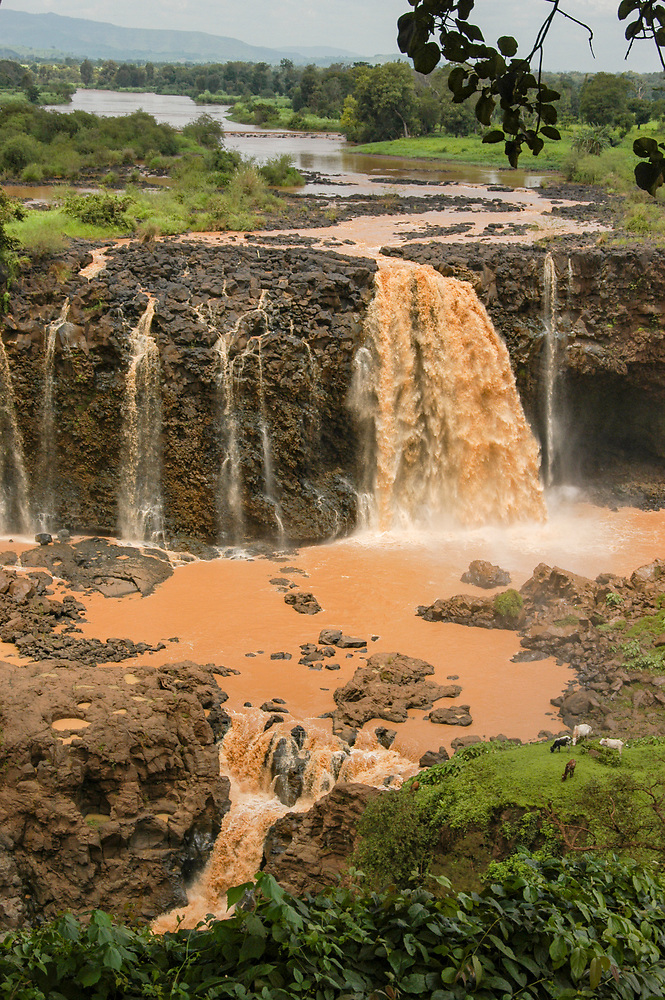
Appropriate claims should be from specialists in water rights or water conservation. As far as my personal opinion is considered, I think we in Ethiopia should be able to utilize the Nile River in a proportionate way, with quite enough left for other riparian countries.
Nothing hinders us from utilizing the Blue Nile since we are part of the Nile’s riparian countries. All proper water use is for irrigation. But concerning further development, of course there are small-scale irrigation projects. Of course, the Ethiopian government is trying to utilize the Blue Nile’s tributaries – but not the main river, as far as I know – for irrigation purposes.
NWNL Have any students from the WTI/Water Technology Institute worked in irrigation projects in the Blue Nile River Basin? Even small-scale projects?
NEGASH WAGESHO Our undergraduate students are normally not engaged in such activities. They simply go to some project sites as field practice sessions to experience practical applications. Currently, we have no students or staff members engaged in Nile River Basin activities.
But there is a university project, funded either domestically or internationally, where competent professionals and faculty from our water resource and environmental engineering departments can become engaged and be a nice support. These projects are related to the Nile Basin, many pertaining to irrigation issues.
NWNL Do your students focus on large-scale or small-scale irrigation projects?
NEGASH WAGESHO Our focus ranges from small-scale to large-scale projects in irrigation engineering, hydraulic engineering, and scientific engineering. The main intention of the department is to train professionals and people who are planning, designing and constructing small-scale irrigation projects. So, now the demand is much more concentrated on medium and larger scale projects.
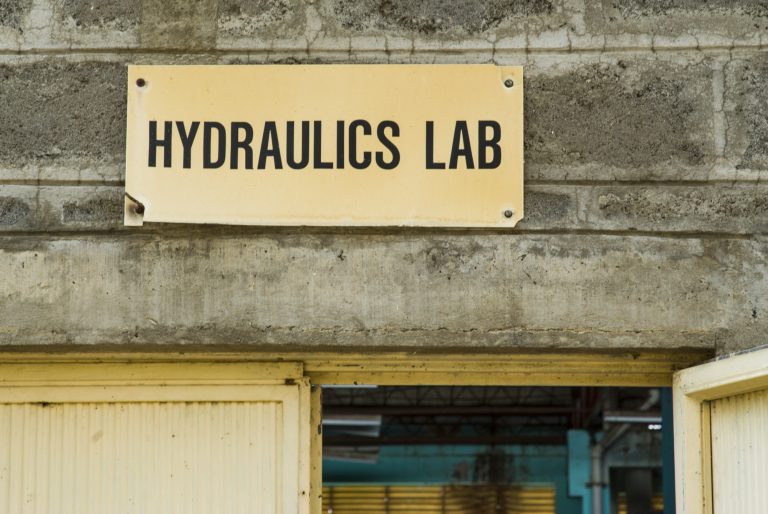
NWNL We visited your demo-plot and Dean Abebe Sine showed me the hose being made locally for drip irrigation, using the inside of a pen as the drip point. Has that hose been marketed yet?
NEGASH WAGESHO Yes, but we cannot produce it for commercial purpose. Our primary aim is that individual farmers utilize these drip kits produced at the local level. We are limited to just training them to use that facility. We can’t produce and sell it out in the public. Yet, we do present and display it at different symposiums and to various organizations.
NWNL This drip pipe is a critical and interesting product. You’ve proved the efficiency of drip irrigation, by using a design where the inside of a pen is the drip point. Plus, this hose makes local agriculture ventures fiscally feasible.
NEGASH WAGESHO The primary aim of the University’s drip-irrigation kit is to provide a tool for poor farmers who are unable to afford costly drip kits. This new pipe makes drip irrigation quite easy at local homesteads.
While our primary intention is research, why not also devise better approaches for income-oriented organizations or firms? Thus, we display our experimental results at different points to various farming communities during symposiums or meetings.
Some of them really have appreciated our drip kit and started using them even 30 miles [50 km] from the university. Our staff went to one plot there to sell their system to local farmers who now utilize it.
Whenever requests come from farmers, we send professionals or technicians to put in the system for them and show them how to install it. That’s their primary aim. We want to commercialize this system, but that wasn’t not our original intention. The farmers buy the drip kit from us, but we give them free-of-charge training so they can use it by themselves.
NWNL Do you know how many acres or hectares are being irrigated with drip kit?
NEGASH WAGESHO It is a very small service, and most users are household users of the system basically to grow vegetables. I suppose a local person might irrigate 2/3 of an acre [1/4 hectare] and a big farmer about 1-1/4 acres [1/2 a hectare].
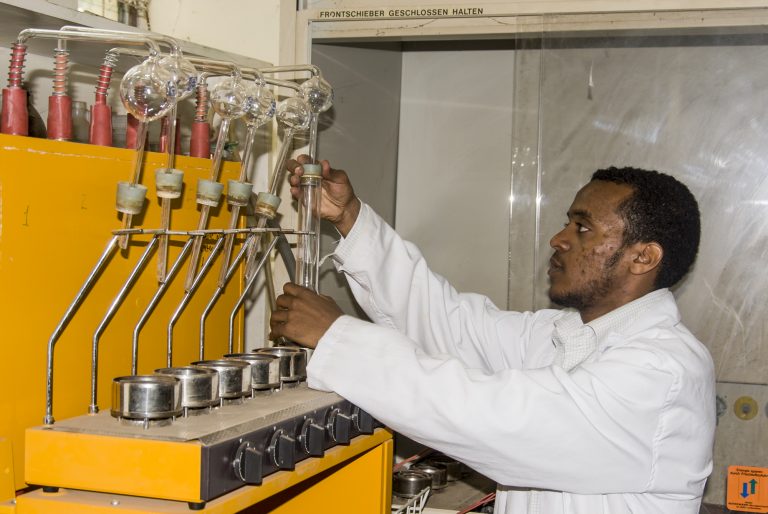
NWNL You tell a fantastic story that uses both small steps and big steps. What do you want to do with your career going foward?
NEGASH WAGESHO That’s a very interesting question. I am very happy and really proud of my career in irrigation in general. I’m more interested in the general sector, but my intention now is to study for my PhD. For that, I’m looking for financial support from different sectors. My dream is to work as private investor in the irrigation sector.
NWNL What should be done to facilitate more efficient irrigation principles in Ethiopia?
NEGASH WAGESHO From the beginning, I was impressed when I looked at your No Water No Life project, launched by you and your colleagues. This is a really great initiative; and I suppose if all this information is shared with the media, then other people can learn about water issues in Ethiopia and help us in many different aspects.
Concerning irrigation – what I have thought for the last six years is that our irrigation water management strategy is very poor. It is very, very poor. Results of our techniques to utilize water sources are unimpressive. To correct that, some mechanism must be established to publicize our utilization of water sources. We must specify how to take our system to users – farmers, communities and state farms – with guidelines to teach them how to manage their water for irrigation.
Secondarily, research related to irrigation, water management and production must be created and then shared with the users showing that the system will increase the value of water. That’s not finished yet. It is at its first stage, and that must be improved.
NWNL Thank you for your time and for your kind comments about No Water No Life. We started the project to raise the public awareness and facilitate the formation of partnerships upstream and downstream, river to river and continent to continent. The solutions lie in sharing information, techniques and approaches. So, thank you for sharing our vision dream.
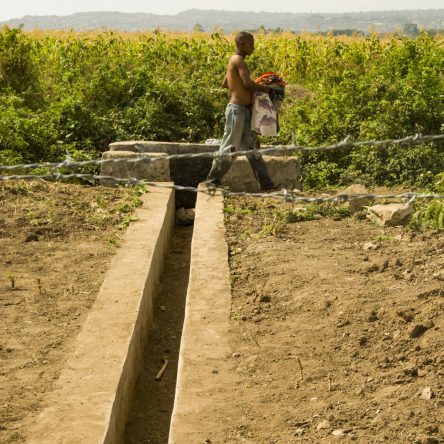
Posted by NWNL on March 20, 2020.
Transcription edited and condensed for clarity by Alison M. Jones.
All images © Alison M. Jones. All rights reserved.
